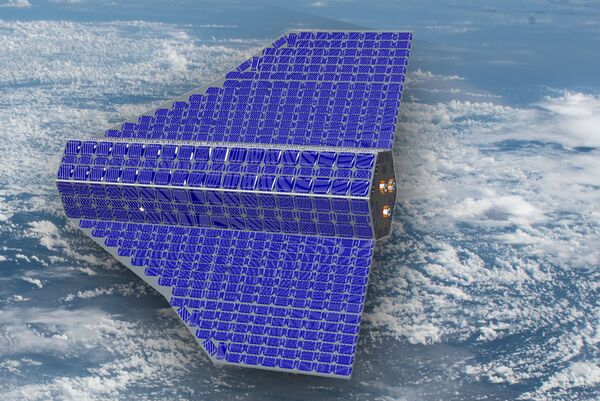
A rendering of the Stingray very low Earth orbit space vehicle. (EOI Space)
The Defense Advanced Research Projects Agency (DARPA) is seeking industry input on the viability of developing and fielding very low Earth orbit (VLEO) satellites for use by the US armed forces, according to a pair of recent solicitations.
Project Otter, as envisioned, will assist DARPA in evaluating potential industry solutions to “develop and demonstrate ‘air-breathing' electric propulsion technologies enabling extended satellite operations in very low Earth orbit”, according to a programme summary included in a 15 June solicitation. Project Otter, which is expected to begin in earnest in fiscal year (FY) 2024, represents the agency's main thrust towards developing a potential VLEO capability.
“DARPA is exploring ideas to help frame future VLEO program investments, with a focus on overcoming energy demand in a high-drag environment, [and] concepts and technologies suitable and complementary to the [VLEO] atmosphere are of interest,” according to a second agency solicitation issued on 16 June.
The VLEO satellites will orbit at a maximum operational altitude of 250 km above the earth's surface, nearly 250 km below the average operational altitude of LEO satellites, which sits roughly at 500 km. However, agency officials anticipate potential VLEO space vehicles (SVs) could conduct missions as low as 90 km above the earth, according to the 15 July solicitation.
DARPA's effort to explore VLEO capabilities for the Pentagon comes as the department continues to mature LEO systems and platforms tied to its Proliferated Warfighter Space Architecture (PWSA). The Pentagon's Space Development Agency (SDA) in May kicked off the development of Tranche 2 SV prototypes for the PWSA's Transport Layer.
Looking to read the full article?
Gain unlimited access to Janes news and more...







